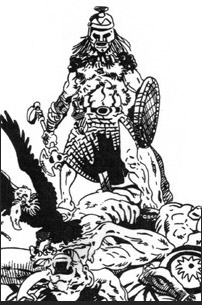Baltimore, Maryland
Emma was thrilled with the packs of cards for her birthday: Standard Bicycle, cheap easy shuffle, mosaic, mural, animal, and Unicorn decks, Unicorn being the best. She knew go fish and trash, two children’s games, but wanted to learn adult games.
She liked Rummy, 200 Rummy, with me throwing 3 in 4 hands so she could get enthusiastic with counting and recording scores.
Once I told her what the suits stood for, the three social estates of the Western World, she became obsessed with suits, laughing at clubs, and admiring spades and seeking to organize like with like.
War, of the variation where same suits can only be added and that a hand of 7 cards is kept, with POW side hands and a draw deck for reinforcements, is much to her liking.
Tunk, or 31, is her favorite adult card game, for she had declared that she wanted to play kids games with kids and adult games with Uncle JIM! Tunk is like blackjack, or 21, without a house dealer, in which an ace may be a 1 or an 11, a hand is 3 cards, only the top discard is available to draw and only cards of the same suit may count towards 31. In Tunk, you deal more 3-card hands from the depleting deck to each player on a rotating basis as players “drop” signaled by a “tunk” or knock on the table.
In thinking up a card game for Emma, I wanted something halfway between trash and solitaire. Trash is played by marking ten spots, drawing a card from the deck, and filling in the spots denoted, with the ace counting as 1, jokers not used, queens and kings trashed, jacks wild and a card that had already been placed is passed on to the next player. I do like the class warfare politics of trash, and think it no accident that children are taught this card game in first grade public and private schools.
So, a player that places an ace in the #1 spot, flips the face down card that had been holding that space in anonymity. If that card is an ace it is passed along. If that card is a 5 it is placed on the 5 spot and the face down card is flipped. If it is a jack it is placed anywhere. If it is an ace, well, this player can’t use that so it is passed on.
-This semi cooperative passing aspect is the basic design mechanic for Jokers’ Dozen.
-All cards may be used.
-Suits must matter.
-Beauty must be accounted for. For instance, Emma likes playing dominoes but not keeping score. She likes the mechanic that each player is alternately matching a like number, but wants the object to be the prettiest shape, preferring swastika shape flower arrangements and multiple spinners. So Jokers’ Dozen is fun to play with special decks, like the unicorn deck.
-Scoring is multifaceted to assist in math.
This game was designed by me in Ocean City, Maryland after playing trash with a ten-year-old Emma, my brother’s step daughter.
Jokers’ Dozen was developed with 7-year-old Emma in Baltimore City, for whom it was designed, keeping in mind that jokers and one-eyed jacks are her favorite cards.
The special card is retained if playing with art decks, this being the two sided cover card, showing the art on the back of the card on both sides.
The big handed adult fan shuffles.
The small handed human slot shuffles.
The big handed adult deals 13 cards, so that the human goes first all of the time and has an advantage over the money-bound adult; the moral hierarchy of natural law thus being respected. Besides, little hands bend the card sometimes when dealing, and they are pretty.
Each player lays out their cards face down in 13 spots in two rows, 7 on the top 6 on the bottom, with the ace in the first spot and the jack, queen and king occupying spots 11, 12 and 13 on the bottom row of 6.
The little human then draws a card and play continues like trash, with the card placed, causing the card that it replaced being flipped and assigned, passed or discarded, like musical chairs, but with cards.
After the first player goes out, the score of the hand is recorded.
Jokers are wild and may go anywhere. Jokers permanently become that card, and may not be used again, unless they are replaced by a Pretty Card [only one to a deck] or a jack, queen or king. So use jokers accordingly as royal place holders. They are the usurper card.
One-eyed jacks may be used to peek under one card, before the player decides to lay down the jack there, or on another spot. So, a one-eyed jack would best be used to peek under a spot other than the 11 spot, and then placed on the 11 spot. This encourages memorization.
The one-eyed king may peek under two cards in this fashion.
The first player to reach 131 points is the winner, so going first matters. This teaches leadership. The score keeping encourages counting, addition and pattern building.
Card values are:
+1 for every placed card
+1 for the low joker
+2 for the high joker. In decks with identical jokers, they are both high, because, as Emma reminded me, “It Is Jokers’ Dozen!”
+2 for the Ace of spades, because it is the prettiest standard card.
+3 for the pretty card
+1 for three cards in a row of the same suit.
+1 for the 4th, 5th, 6th, card of the same suit, and so on.
This last valuation brings into play covering of placed cards.
Example:
Emma has placed a jack of clubs, a queen of spades and a king of clubs.
If Emma draws or is handed off a queen of clubs, she may place her on top of the queen of spades, thus imprisoning her in her own tower, taking her place, and earning that player a bonus point. In games with more than two players, this tactic will also deny a card to another player who could use it.
If the deck wrecks a hand, with no player placing all 13 spots, then the player with more suit rank gets the difference in bonus points. This is done to utilize subtraction.
Suit rank is valued like so:
Each card has a value.
-Clubs [wands or peasants] = 1
-Diamonds [pentacles or merchants] = 2
-Hearts [cups or nobility] = 3
-Spades [swords or royalty] = 4
-Joker = 5
-Pretty card = 7
The highest suit ranked stalled hand of 12 places, beaten by the deck, would be 9 spades [36], 2 jokers [10] and 1 pretty card [7], for 12 places and 53 points.
A median stalled hand of 10 places of 2 clubs [2], 3 diamonds [6], 3 hearts [9] and 2 spades [8] would rank 25.
The player with a rank of 53 would subtract the lower ranking players rank of 25 from his rank of 53 and gain 28 bonus points.
Variation
Utter Ruin
To encourage cooperation while competing, any hand that is wrecked by the deck, where no players complete their set of 13 cards, results in utter ruin, trashes the game and Cruel Fate is declared the winner. Play no switches to the game chosen by the player with the lowest suit rank—a lesson in “based social accelerationism.
That is Jokers’ Dozen, play-tested with Emma, the developer, one Sunday summer morning in Outer East Baltimore, in Aunt Georgia’s kitchen, while MumMum cooked breakfast.











